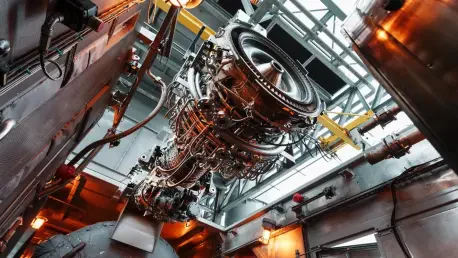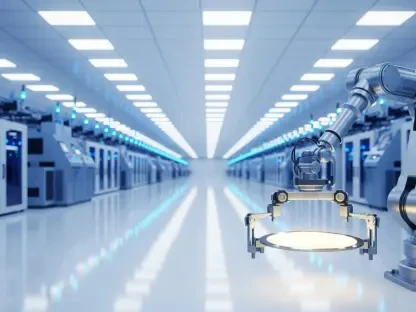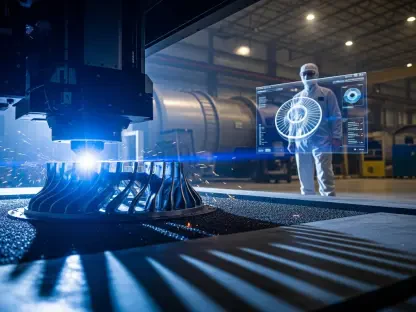In an era marked by rapid technological evolution and burgeoning innovations, a pivotal collaboration between industry giants has reshaped the naval and hypersonic propulsion landscape. The partnership involving Nikon SLM Solutions, ATI, and BPMI reflects a growing trend of collaborative ventures in the defense sector. It seeks to combine knowledge, expertise, and resources to create advanced propulsion systems essential for meeting modern military and civilian demands. The strategic alliance highlights a shared commitment to enhancing speed, efficiency, and ultimately, the performance of propulsion technologies. With significant investments in research and development, this collaboration aims to redefine engineering possibilities. By unifying their strengths, these companies are set to pioneer cutting-edge solutions, ensuring that their contributions will leave a lasting impact on future propulsion technologies.
Strategic Industry Collaboration
Expanding Boundaries through United Efforts
The partnership stands out for its role in setting new industry benchmarks by harnessing the strengths and unique capabilities of each company. Nikon SLM Solutions brings its proficiency in additive manufacturing technology, a modern method enabling unprecedented precision in the production of complex parts. This expertise provides innovative means to fabricate propulsion components with designs once considered impossible. Meanwhile, ATI offers valuable insights through its vast experience in producing high-grade material solutions crucial for the durability and functionality of propulsion systems. BPMI’s contribution lies in its strategic project management acumen and specialization in propulsion integration, ensuring that new technologies seamlessly fit into existing systems.
By joining forces, these industry leaders aim to transcend traditional manufacturing boundaries and address complex engineering challenges. This initiative reflects a broader trend toward cooperative synergies, aligning resources and talents to tackle challenges that might seem insurmountable to individual entities. Through a united front, they strive to foster groundbreaking improvements across naval and hypersonic sectors. Moreover, this collaboration accentuates a common vision: propelling propulsion technology forward, thereby ensuring modern navies and aeronautical ventures remain at the forefront of global advancement.
Overcoming Challenges with Collective Expertise
The alliance also embodies a response to the persistent challenges faced in developing modern propulsion systems. Navigating the intricacies of designing systems that not only meet but exceed, current expectations in speed and efficiency requires an in-depth understanding and a multifaceted approach. Each company involved brings its distinct perspective and skills to the table, allowing for a comprehensive investigation of potential solutions. The collaboration is strategically positioned to address the multifaceted problems of propulsion engineering. Leaning on combined pools of expertise, novel ideas can be explored and tested with greater efficacy.
As propulsion systems are a critical component of defense and civilian infrastructure, this partnership addresses the need for reliability and performance amidst increasingly demanding scenarios. The collaborative structure facilitates a mutual evaluation of various techniques and encourages the sharing of best practices among key players. This exchange not only accelerates innovation but also mitigates risks associated with individual experimentation, fostering a safer avenue for ambitious advancements. The partnership exemplifies an evolving trend in how industries can maximize potential.
Key Focus Areas for Innovation
Advancements in Naval Propulsion Systems
Naval propulsion has seen a transformative shift as new technologies aim to revolutionize maritime operations. A significant focus of the collaboration is the development of sophisticated propulsion designs that enhance operational efficiency and reliability. Advanced ship designs and energy-efficient systems are pivotal outcomes from the mutual efforts of these industry leaders. This includes exploring alternative energy sources and propulsion techniques, which promise to streamline naval capabilities, ensuring speed and sustainability. The initiative is not only about achieving faster maritime movement but also about integrating technology that supports long-duration missions.
Modern navies require ships that can handle multifaceted missions, often spanning various environments and pressures. The collaboration with Nikon SLM Solutions, ATI, and BPMI is thus dedicated to creating propulsion solutions that endure such diverse operational requirements. Embracing clean energy alternatives and hybrid propulsion systems serves both the strategic aim of performance and the necessity for environmentally-conscious operations. The naval propulsion focus is a testament to the collaboration’s commitment to pioneering technologies that provide tactical advantages in maritime settings, ready to adapt and overcome contemporary challenges.
Pioneering Hypersonic Propulsion Development
Within the realm of hypersonic propulsion, the collaborative efforts target systems capable of surpassing traditional speed barriers, offering unprecedented opportunities in speed and maneuverability. These technologies are crucial for both military and civilian applications, presenting a leap in capabilities from current standards. Hypersonic propulsion, characterized by speeds exceeding Mach 5, opens new horizons for aerospace exploration, defense, and intercontinental transportation. Achieving such velocities necessitates sophisticated solutions in materials science, engineering design, and thermal management—all critical areas where the distinct expertise of the collaborators plays a role.
In practice, the development of effective hypersonic systems revolutionizes aerodynamics and flight mechanics, paving the way for advanced vehicles capable of diverse missions. The partnership looks to address these challenges with a focus on cutting-edge materials and engineering techniques that can withstand extreme conditions. The importance of this focus cannot be overstated in the context of modern defense strategies, as it emphasizes rapid response capabilities and strategic reach, integral factors for global security.
Future Implications and Strategic Outlook
Measuring Impact on Defense and Civilian Sectors
Evaluating the impact of the collaborative pursuit of advanced propulsion technologies reveals significant implications across both defense and civilian sectors. In defense, such advancements provide the strategic advantage necessary in modern warfare, where speed and precision are the linchpins of military success. The emergence of sophisticated propulsion systems ensures that military infrastructure keeps pace with evolving threats and challenges. For civilian sectors, especially in aerospace, improved propulsion efficiency and reliability translate to better performance and cost-effectiveness in commercial aviation, benefiting passengers and operators alike.
Beyond physical infrastructures, the collaboration cultivates a culture centered on continuous innovation and adaptation, infusing traditional methods with new-age technologies. The ripple effect is seen across various industries, each inspired to rethink current methodologies and explore cross-industry collaborations. This results in a dynamic that fosters economic growth and technological progress, impacting everything from job creation to global competitiveness. The strategic implications of such advancements transcend immediate military applications, significantly contributing to the global technological landscape.
Setting Precedents for Industry Collaborations
The collaboration marks a pivotal point in how industry giants choose to navigate complex engineering challenges together, setting a valuable precedent for future projects. The venture highlights the benefits of shared expertise and resources, fostering a model of collective progress that others may seek to replicate. It showcases the ability to leverage diverse perspectives and strengths, ensuring more holistic approaches to technological challenges. While traditionally, companies might have pursued competitive or isolated development, this partnership underscores a paradigm where shared goals and aligned incentives drive innovation forward.
The precedent established extends beyond mere technological advancement to encompass strategic, operational, and cultural changes. It serves as a blueprint for how companies ought to approach global challenges, reiterating the importance of sustainable, collaborative efforts in fostering technological progress and problem-solving. Furthermore, as industries face increasingly complex challenges and a rapidly changing global landscape, such collaborations will likely become indispensable, serving as the backbone for bold, pioneering projects and transformative advancement in various domains.
Conclusion
In conclusion, the collaborative efforts of Nikon SLM Solutions, ATI, and BPMI have paved the way for transformative advancements in naval and hypersonic propulsion systems, showcasing the power of united expertise. By integrating their unique strengths, these companies have positioned themselves at the forefront of engineering innovation, setting a new benchmark for how challenges in the defense sector can be tackled collaboratively. This initiative not only drives technological advancements but also reflects a broader trend in fostering cross-industry partnerships, serving as a model for future collaborations. With continued investments in research and development, these efforts promise lasting impacts on global defense and civilian sectors, aiding in maintaining strategic advantages in changing environments across the globe.









